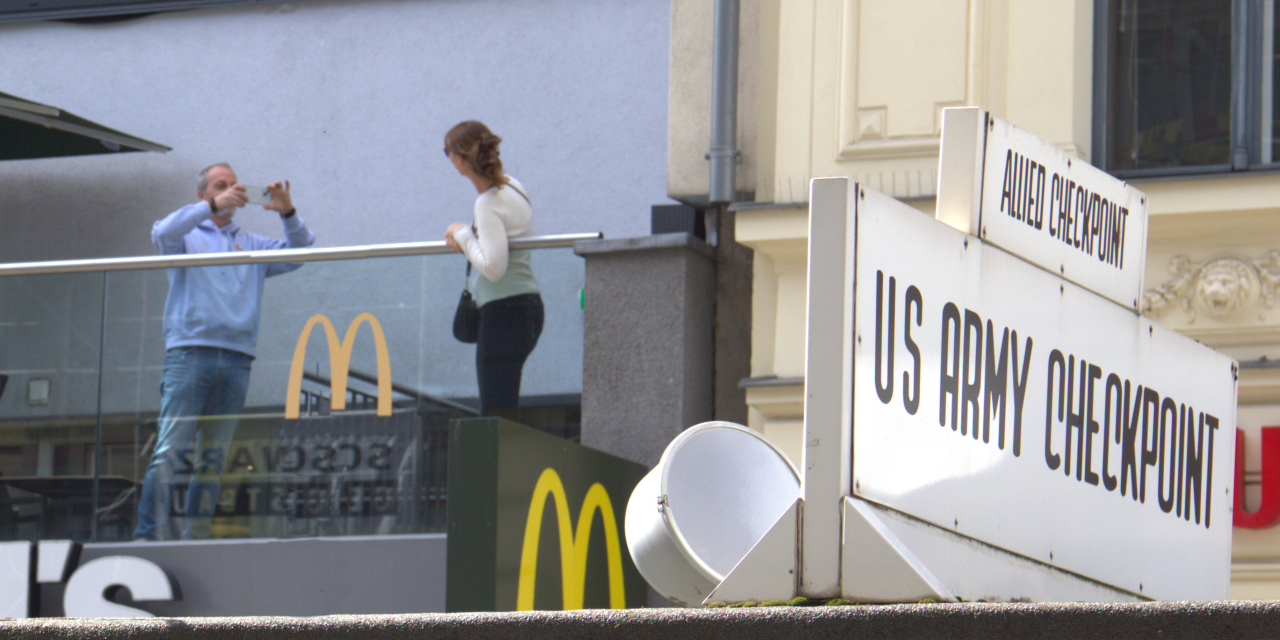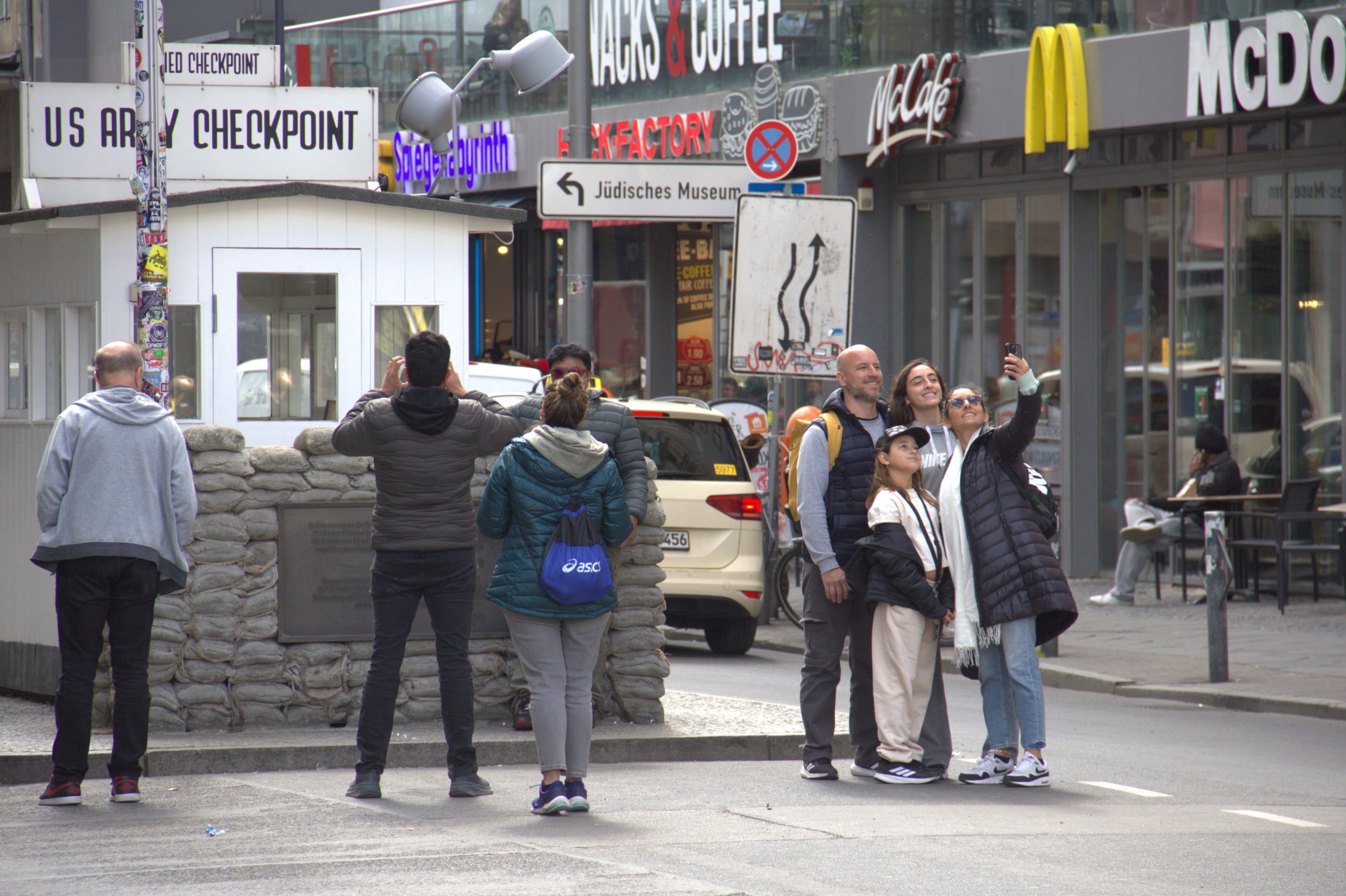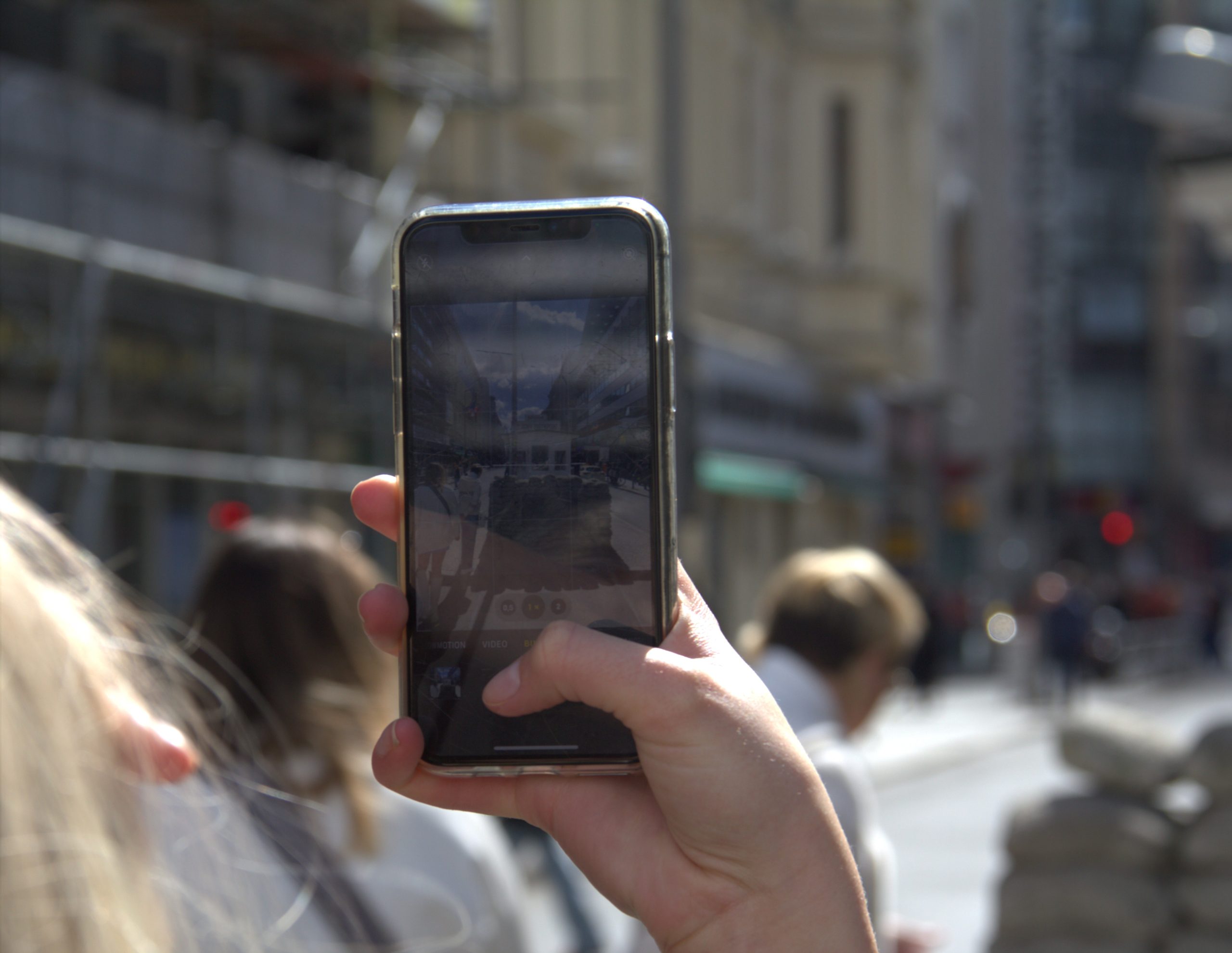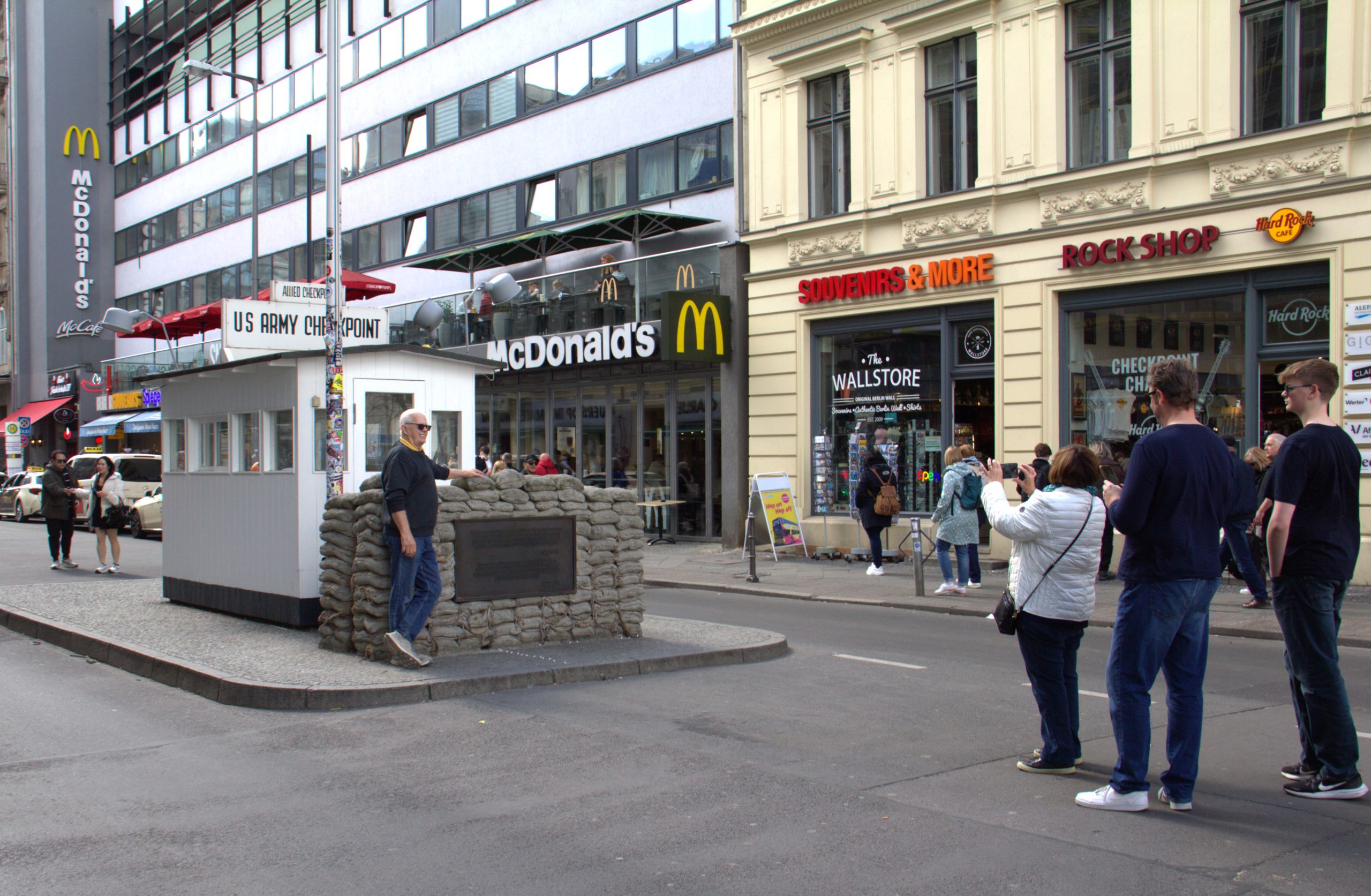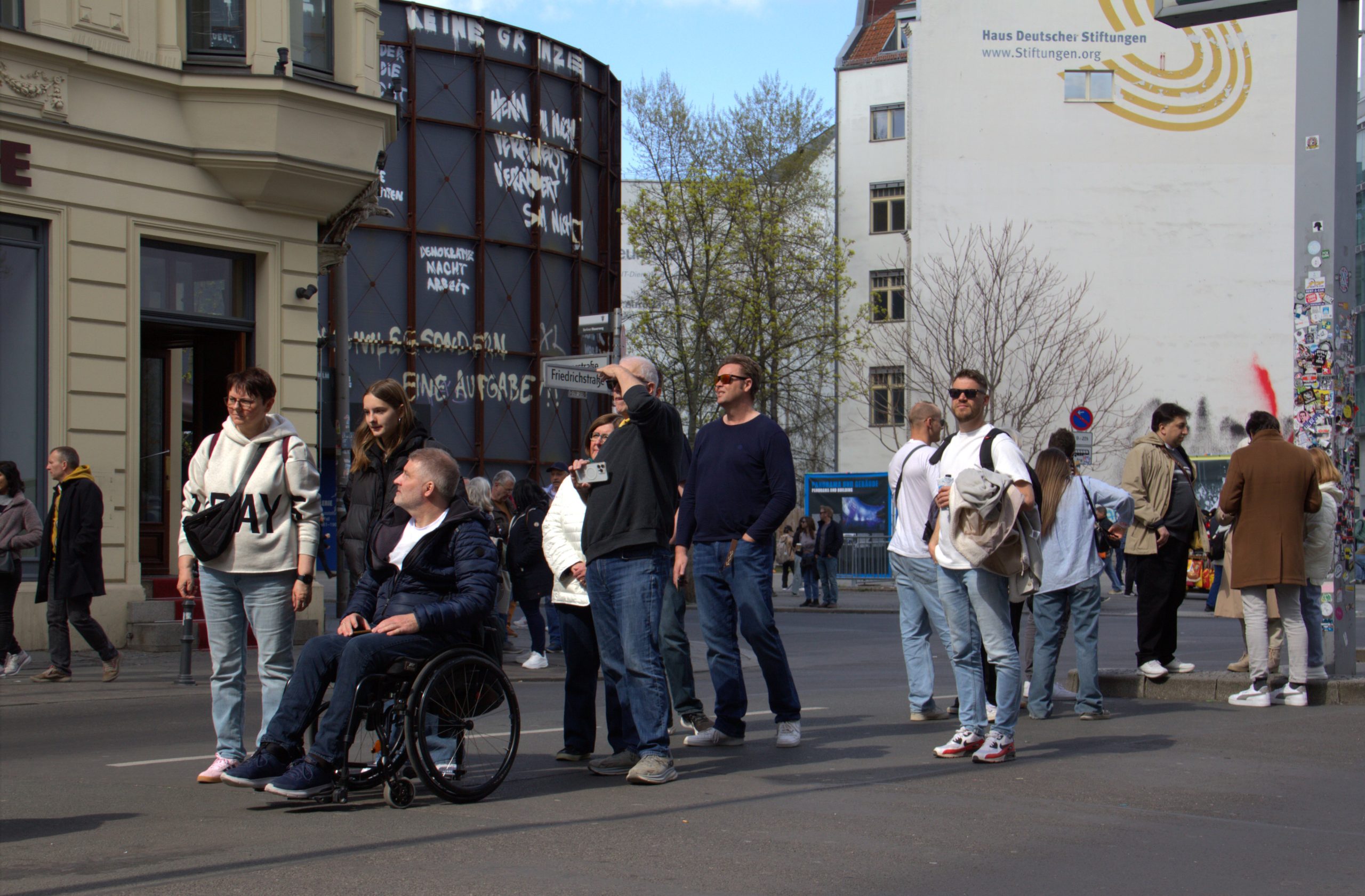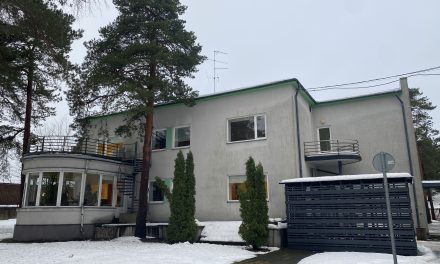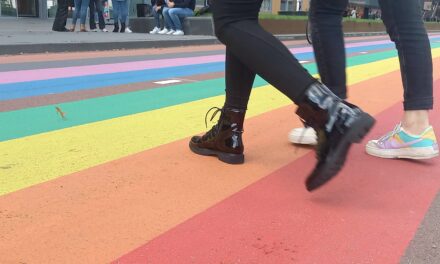BERLIN – At a busy intersection in Berlin, people crowd around a small white guardhouse, searching for the best photo angle. The side of the road is filled with bright coloured fast-food restaurants and souvenir shops. If you were to go back in time 60 years, this would be a tense place. During the time of the Berlin Wall, it was one of the most important border crossings between East and West Berlin: Checkpoint Charlie. Now, Checkpoint Charlie seems to be reduced to a sheer backdrop for tourist pictures.
Tourists que in front of the guardhouse at Checkpoint Charlie to take a picture.
Many organisations and residents are frustrated by the commercial and touristic situation around the site, saying that it doesn’t reflect the weight of the history.A group of tourist standing in the que for a picture in front of the guardhouse confirm this idea. ‘This had something to do with the Berlin Wall right?’, one of them says questioningly. The Berlin Senate came to action and made plans for renovation to improve the situation in 2019. It raises a question that many historical sights face; is mass tourism a blessing, or a curse?

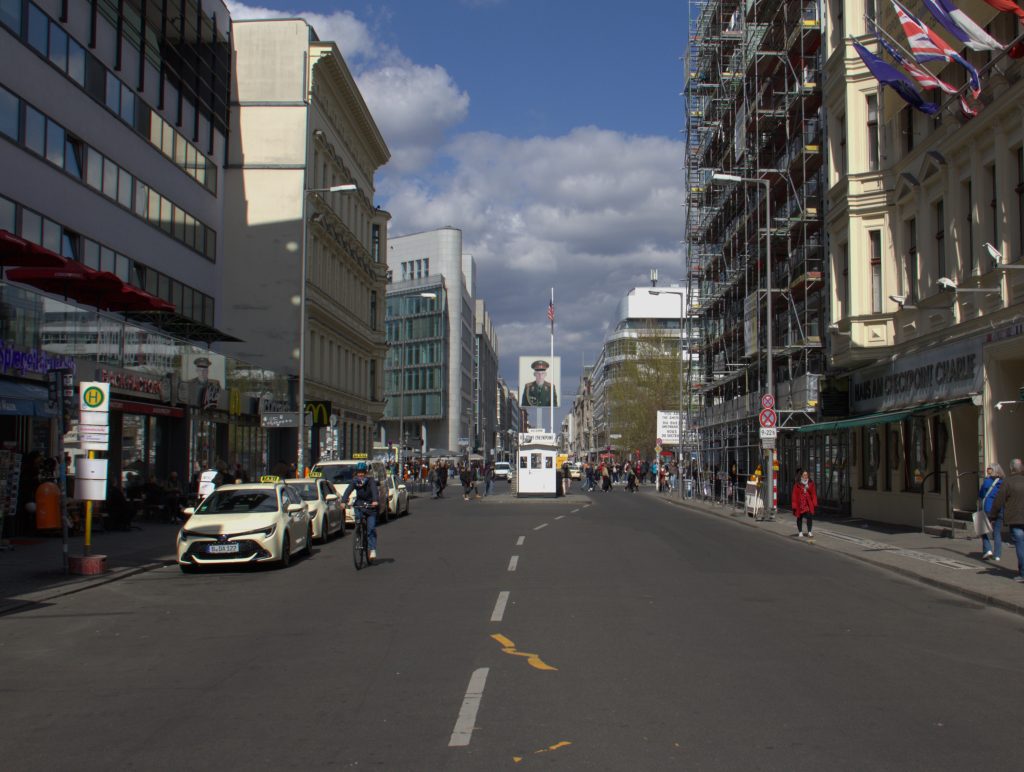
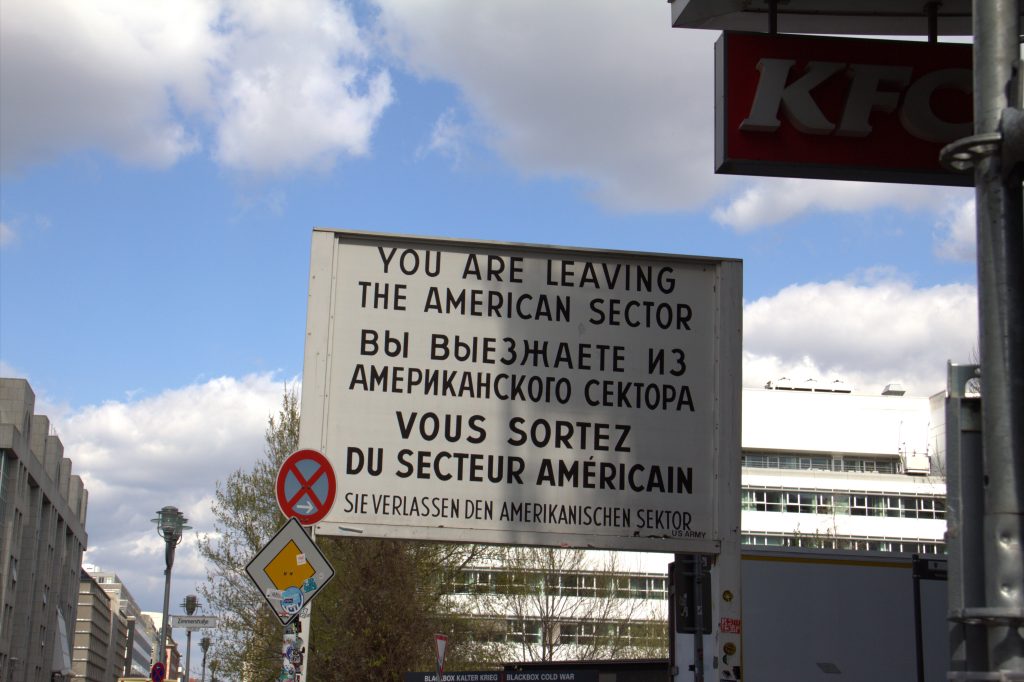
A replica of the original guardhouse and the ‘You are leaving the American sector’ sign.
While there are multiple traces and historical sites of the Berlin Wall found around Berlin, Checkpoint Charlie has become one of the most famous and significant ones. When the wall was built in 1961, Checkpoint Charlie became the most important and most heavily guarded border crossing between East and West Berlin. Only diplomats, foreign tourists and military personnel were allowed to pass, but many other people attempted to escape through the checkpoint. At least 138 people have lost their lives trying to escape via barricades, tunnels or by hiding in secret compartments of crossing vehicles.
Dr. Susanne Muhle, head of project at the Berline Wall Foundation explains how Checkpoint Charlie became a big touristic hotspot. ‘In comparison to other Berlin Wall memorial places, like the Bernauer Strasse, Checkpoint Charlie is more internationally known. It was also redeveloped to be a touristic spot earlier. This Wall site hasn’t lost its appeal, also thanks to the private Wall Museum next to it’, Muhle adds.
The private Wall Museum is located on the American side of Checkpoint Charlie. It is there now, and it has been there since 1963, 2 years after the build of the Wall. ‘Our museum is not only telling the history of the Berin Wall; it has lived through the history itself. The museum grew up with the Wall’, says Alexandra Hildebrandt, director of the Wall Museum. The iconic image of Checkpoint Charlie in combination with the museum have made the site that attracts 4 million visitors annually.
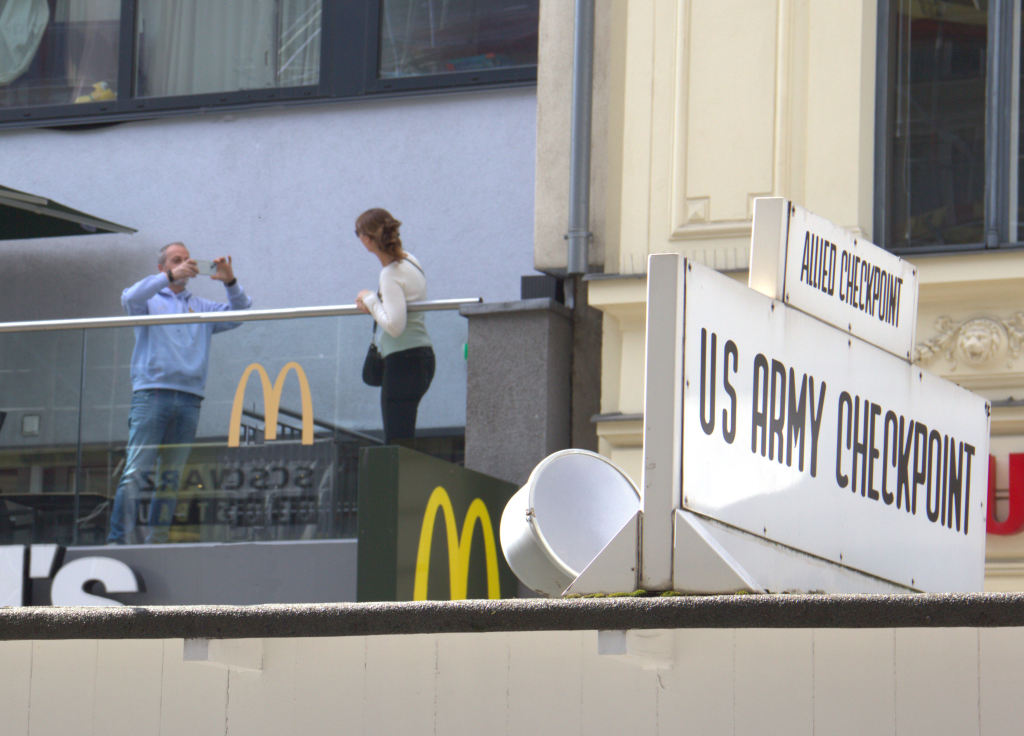
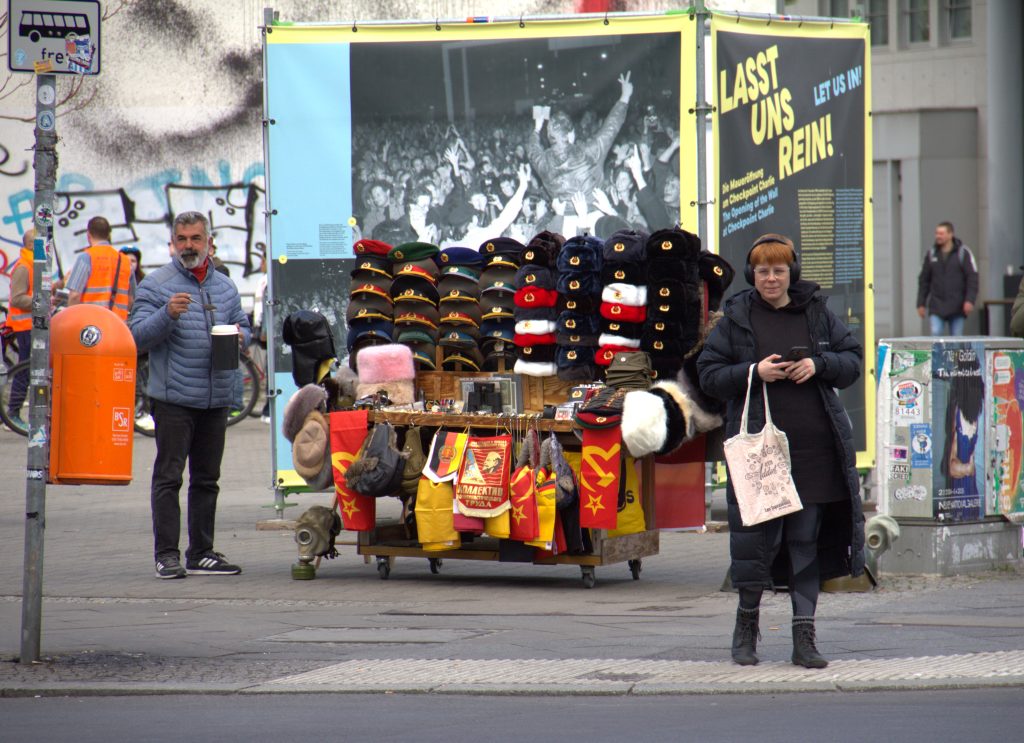


Shops and tourist attractions in the Friedrichstrasse.
However, for years there has been critique on the site for being too commercial and touristic. The Friedrichstrasse is lined with souvenir shops, fast food restaurants and attractions like a Mirror Maze. Muhle explains the cause of this. ‘The state of Berlin wanted to create a memorial site in the area, but the investor that owned the plot of the GDR former border crossing went bankrupt. This left the plot undeveloped for many years. However, the place became more and more popular for tourists and private providers saw an opportunity to fill the gaps in the area. Some were more; some were less reputable.’
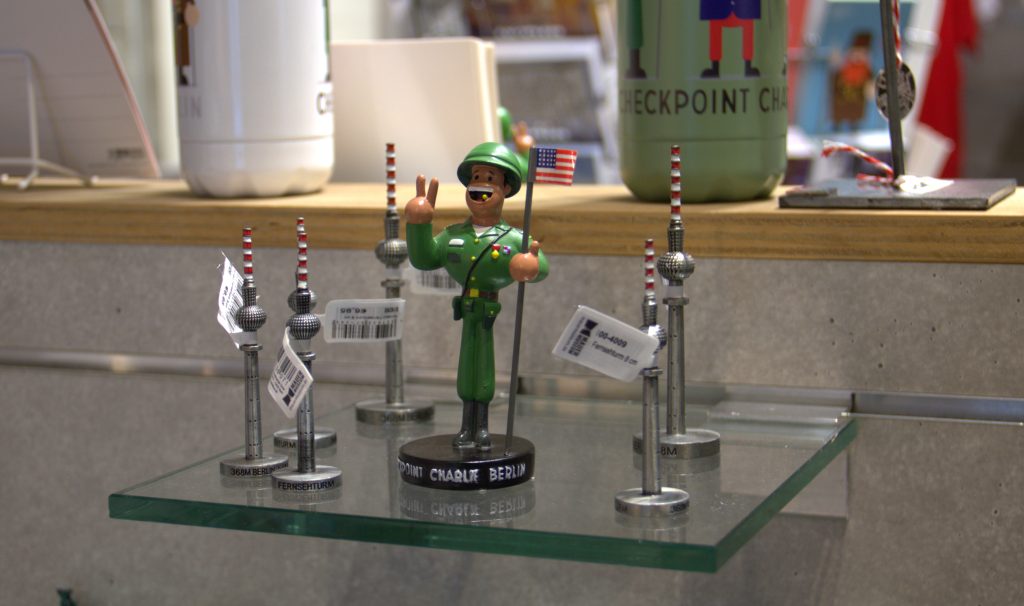


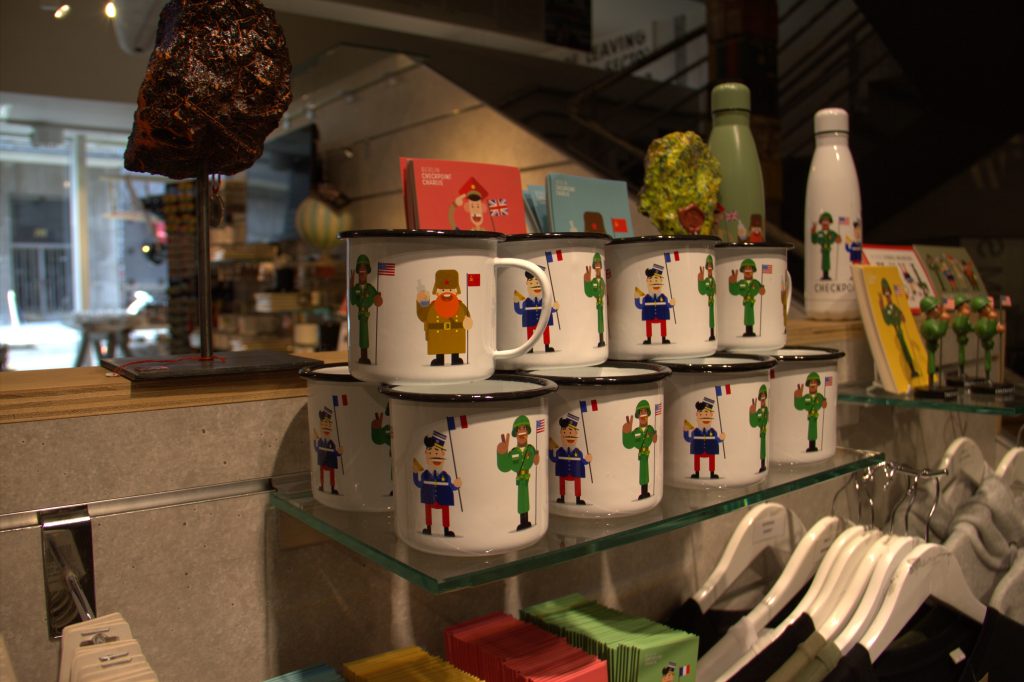


Berlin Wall souvenirs that are found in the shops on Friedrichstrasse. The pieces of Berlin Wall are original, according to the shopowner.
It’s not only the shops that bother people. The replica of the guardhouse is the focal point where tourists que for a selfie or a picture behind the stacked sandbags. Until 2019 there were actors playing military personnel that exploited tourists for a picture. It has been described on Tripadvisor as ‘disappointing’, a ‘tourist trap’ with ‘tacky souvenir shops. When asking people around the site why they are visiting this place and what they know about its history, they confirm the idea of a cheap touristic picture opportunity. ‘I think like most people, we are here for a picture. I think people want to show that they have been here on social media’, says a boy visiting the site with his parents. According to the CEO of the tourist organisation of Berlin visitBerlin, Checkpoint Charlie has become a thorn in the eye and the CEO spoke out the wish for more quality tourists, rather than the fast food and selfie tourists.
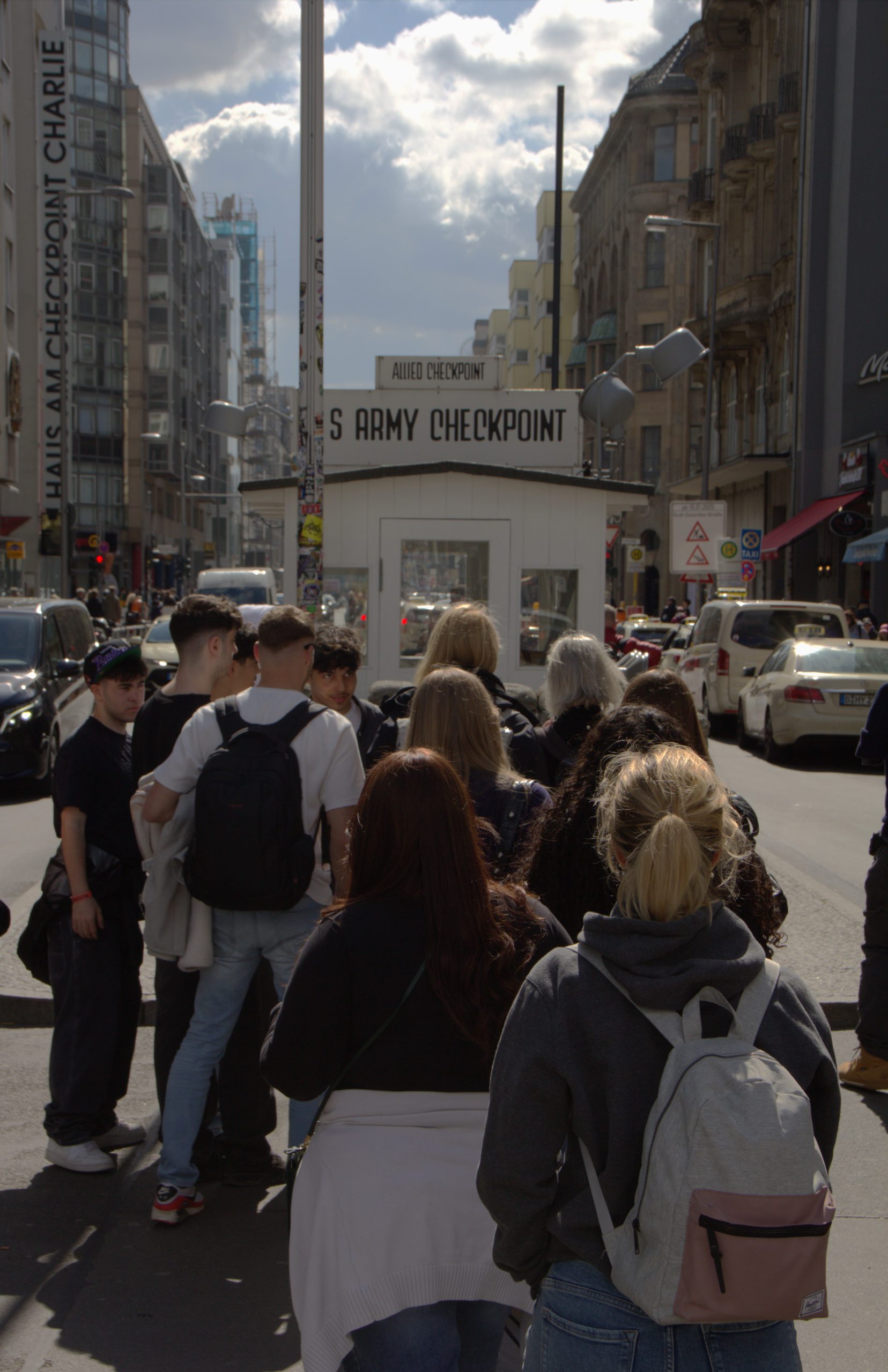
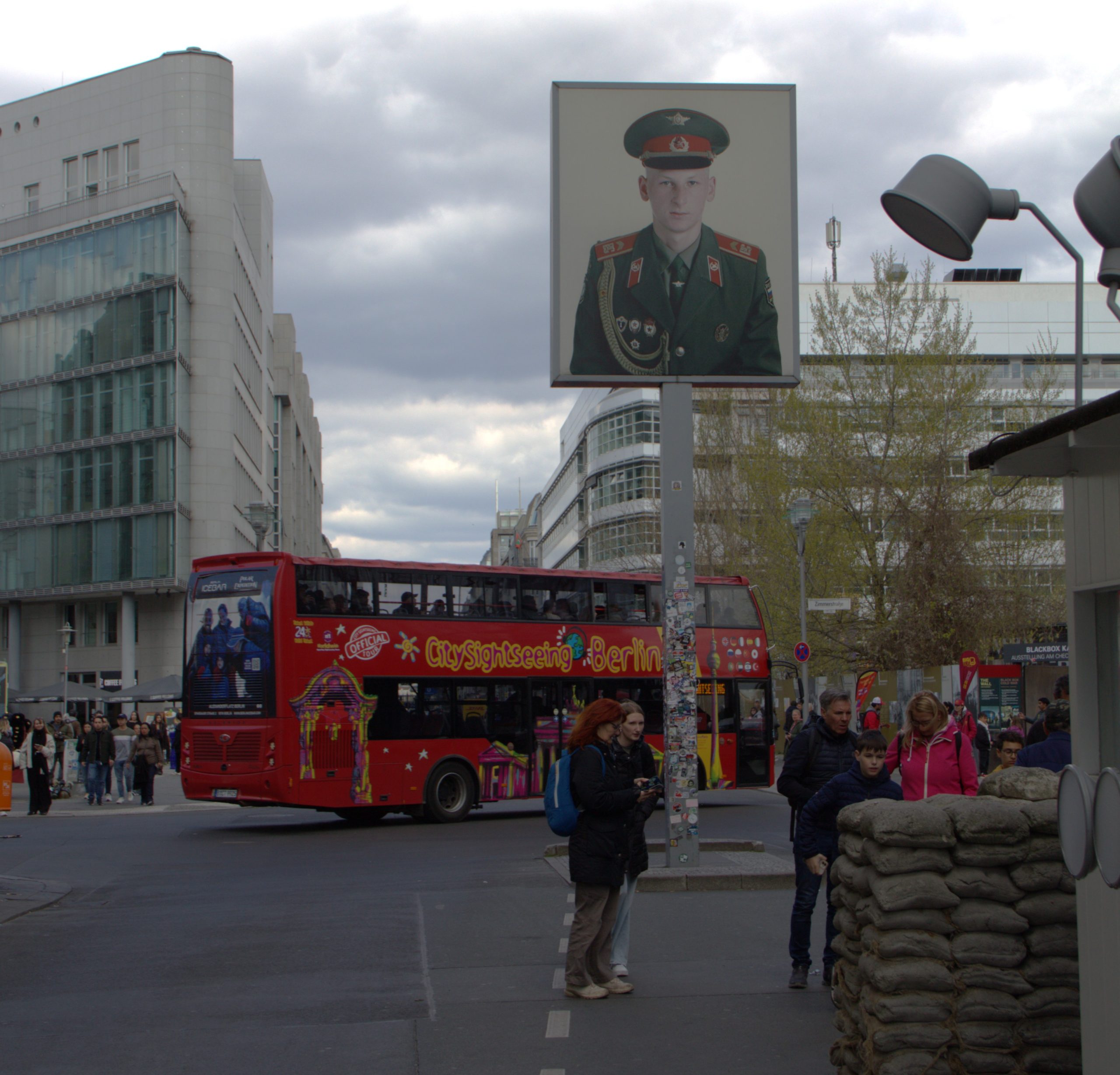
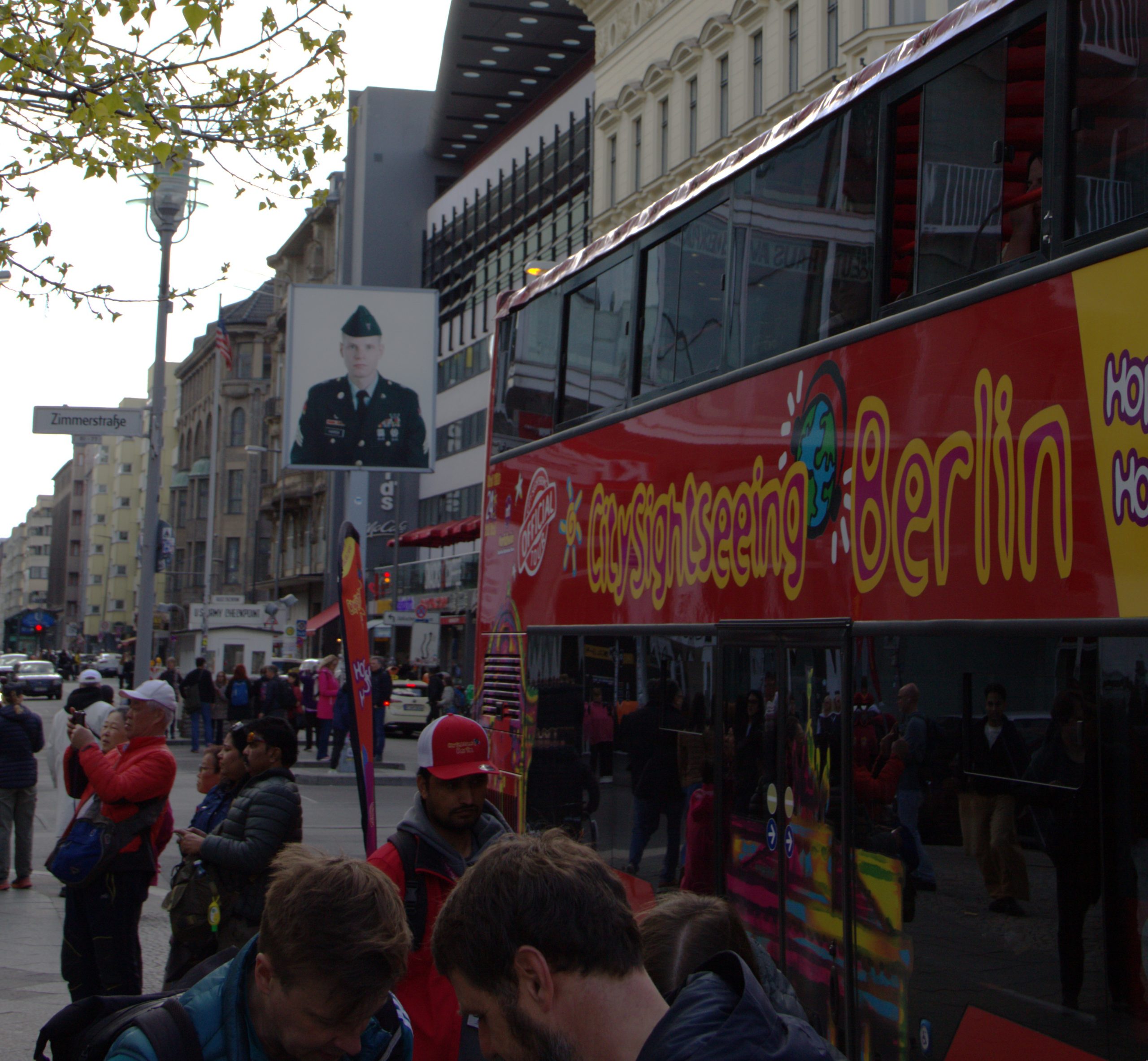
Every few minutes, a hop-on hop-off bus arrives at Checkpoint Charlie.
Not everyone is on the same page about the mass tourism being a negative. Alexandra Hildebrandt is one of them. ‘I think it’s stupid that people are critical about the tourism around Checkpoint Charlie. Everywhere in the world you have places like this. In Paris people crowd before the Sacre Coeur or the Eiffel tower. It’s a natural thing and that doesn’t mean it is bad. I see it as something positive that tourists still visit Checkpoint Charlie. It is necessary to keep the memory alive. People can come into our museum and learn all about Berlin during the Cold War and what happened at the border crossing. You can tell from their faces that the story leaves an impact.’
Dr. Muhle also doesn’t only see the negative sides of the touristic rush around the Wall site. ‘In a sense, the visitors are the only reason the checkpoint is still there. In 1990, Checkpoint Charlie was initially overlooked by West Berlin as a memorial site. Obviously, its historical significance was not properly assessed or was subordinated to economic interests. However, the visitors who continued to come to the site from all over the world, and in increasing numbers, made those responsible for politics realise in the 1990s that the site could not simply be allowed to disappear from the cityscape.’
The Berliner Wall Foundation does agree that there should be changes made to make sure visitors really learn about the history and significance of the place, rather than it just being a selfie spot. Since renovation plans have been announced in 2019, the Berlin Wall Foundation has been occupied with the plans for the project. Muhle: ‘As part of the redesign, the historical site is to be made more visible again in the cityscape, especially the GDR border crossing point, which has been almost completely erased. In addition, a modern memorial site is to be created here, where the history of the site and the Cold War as international dimension will be visualised. In order to increase the quality of stay, places of retreat are to be created on the two squares and traffic at the crossroads is to be calmed.’ The aim of the renovation is to create a space for different perspectives, connection between visitors and where they can talk about their experiences during the Cold War and its effects until the present day.
As long as the iconic guardhouse stands, the tourists will probably keep visiting. Dr. Susanne Muhle hopes that after the renovation, Checkpoint Charlie’s image will change and that it will be an appealing and, in a positive sense, lively place that illustrates the history of the place to the still numerous visitors, teaches them the value of freedom and democracy and at the same time sensitises them to the consequences of the Cold War.
